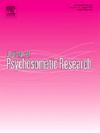中国老年人睡眠与多病之间的二次关联:来自CLHLS 2011 - 2018的证据
IF 3.5
2区 医学
Q2 PSYCHIATRY
引用次数: 0
摘要
目的探讨睡眠与多病的关系,包括睡眠时间与多病的关系、睡眠质量与多病的关系。方法利用中国纵向健康寿命研究(2011、2014和2018)最新三波数据,采用二元面板回归分析睡眠时间与多发病之间的二次关系。随后,进一步利用二次拟合和稳健性分析来加强对这一关系的验证。结果2011 - 2018年多病患病率呈上升趋势,平均患病率分别为0.309、0.345、0.367。睡眠时长为7.45分、7.34分、7.39分,睡眠质量呈下降趋势,得分分别为3.70分、3.63分、3.47分。回归分析显示,睡眠时间与多病之间的比值比(OR)为0.734,95% CI =[0.6272, 0.8582],睡眠时间与多病的平方之间的比值比为1.016,95% CI =[1.0058, 1.0262]。从二次元关系可以看出,随着睡眠时间的延长,中国老年人的多发病先减少后增加。结论不同睡眠时间个体的多病发生率有显著差异。我们观察到睡眠时间和多病之间呈u型关系,即短睡眠时间和长睡眠时间都与多病的高发率相关。此外,研究还发现睡眠质量与多重疾病之间存在负相关,这表明较高的睡眠质量与较低的多重疾病发病率有关。本文章由计算机程序翻译,如有差异,请以英文原文为准。
Quadratic associations between sleep and multimorbidity among the older population in China: Evidence from CLHLS 2011 to 2018
Objectives
To investigate the relationship between sleep and multimorbidity, including the associations between sleep duration and multimorbidity, as well as between sleep quality and multimorbidity.
Methods
Using data from the three latest waves of the Chinese Longitudinal Health Longevity Study (2011, 2014, and 2018), a binary panel regression was conducted to investigate the quadratic relationship between sleep duration and multimorbidity. Subsequently, quadratic fitting and robustness analysis were further utilized to strengthen the verification of this relationship.
Results
From 2011 to 2018, the prevalence of multimorbidity increased, with average rates of 0.309, 0.345, and 0.367, respectively. Meanwhile, sleep duration was 7.45, 7.34, and 7.39, but sleep quality showed a declining trend with scores of 3.70, 3.63, and 3.47, respectively. Furthermore, the regression analysis revealed that the odds ratios (OR) for the relationship between sleep duration and multimorbidity, and between the square of sleep duration and multimorbidity were 0.734, with 95 % CI = [0.6272, 0.8582] and 1.016, with 95 % CI = [1.0058, 1.0262], respectively. From the quadratic relationship, it is evident that the multimorbidity among older Chinese adults initially decreases and then increases with long sleep durations.
Conclusions
The multimorbidity was significantly different among individuals with different sleep duration. A U-shaped relationship was observed between sleep duration and multimorbidity, whereby both short and excessive sleep durations were associated with higher rates of multimorbidity. Additionally, a negative association was found between sleep quality and multimorbidity, indicating that higher sleep quality was linked to lower rates of multimorbidity.
求助全文
通过发布文献求助,成功后即可免费获取论文全文。
去求助
来源期刊
CiteScore
7.40
自引率
6.40%
发文量
314
审稿时长
6.2 weeks
期刊介绍:
The Journal of Psychosomatic Research is a multidisciplinary research journal covering all aspects of the relationships between psychology and medicine. The scope is broad and ranges from basic human biological and psychological research to evaluations of treatment and services. Papers will normally be concerned with illness or patients rather than studies of healthy populations. Studies concerning special populations, such as the elderly and children and adolescents, are welcome. In addition to peer-reviewed original papers, the journal publishes editorials, reviews, and other papers related to the journal''s aims.

 求助内容:
求助内容: 应助结果提醒方式:
应助结果提醒方式:


